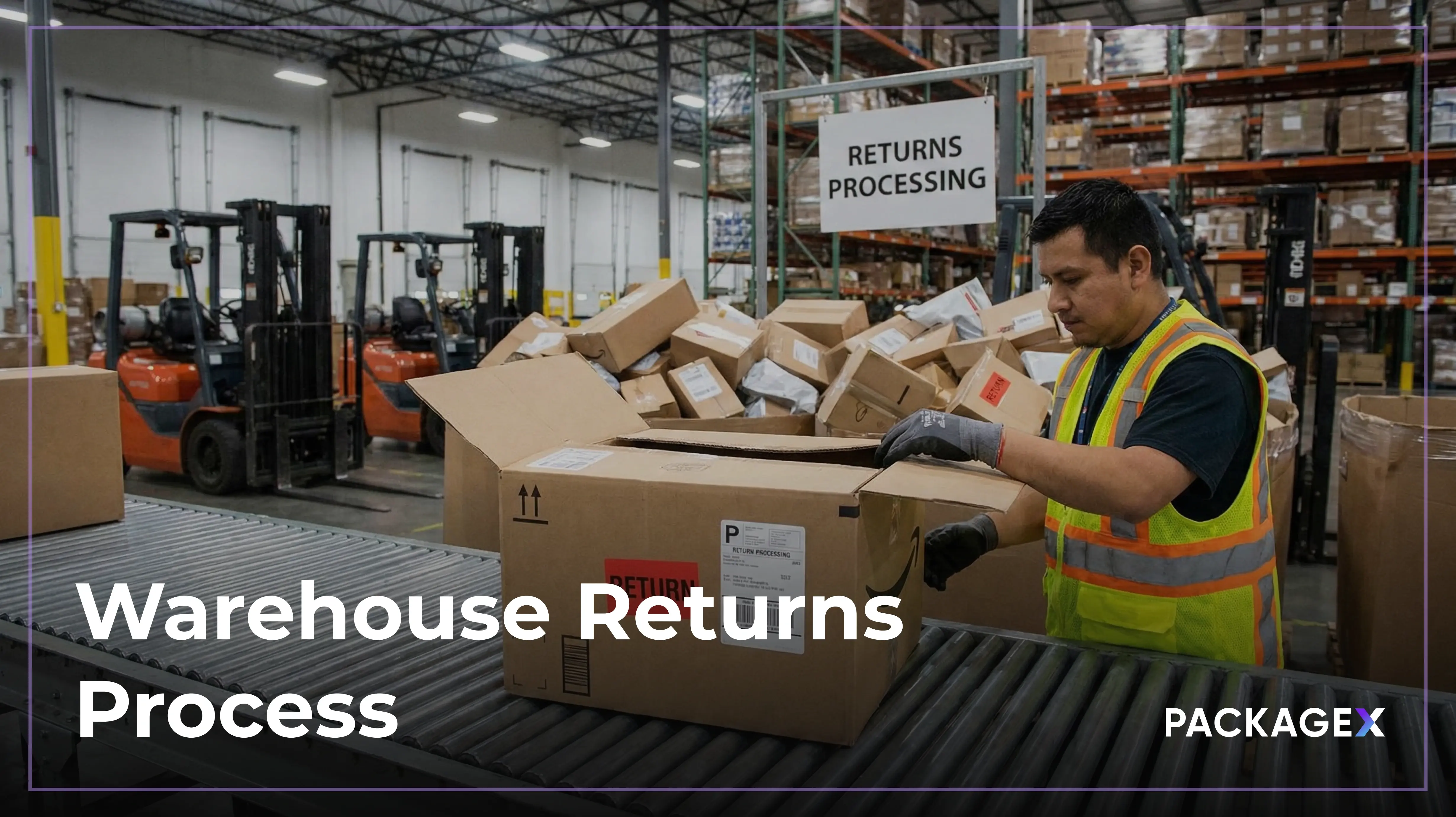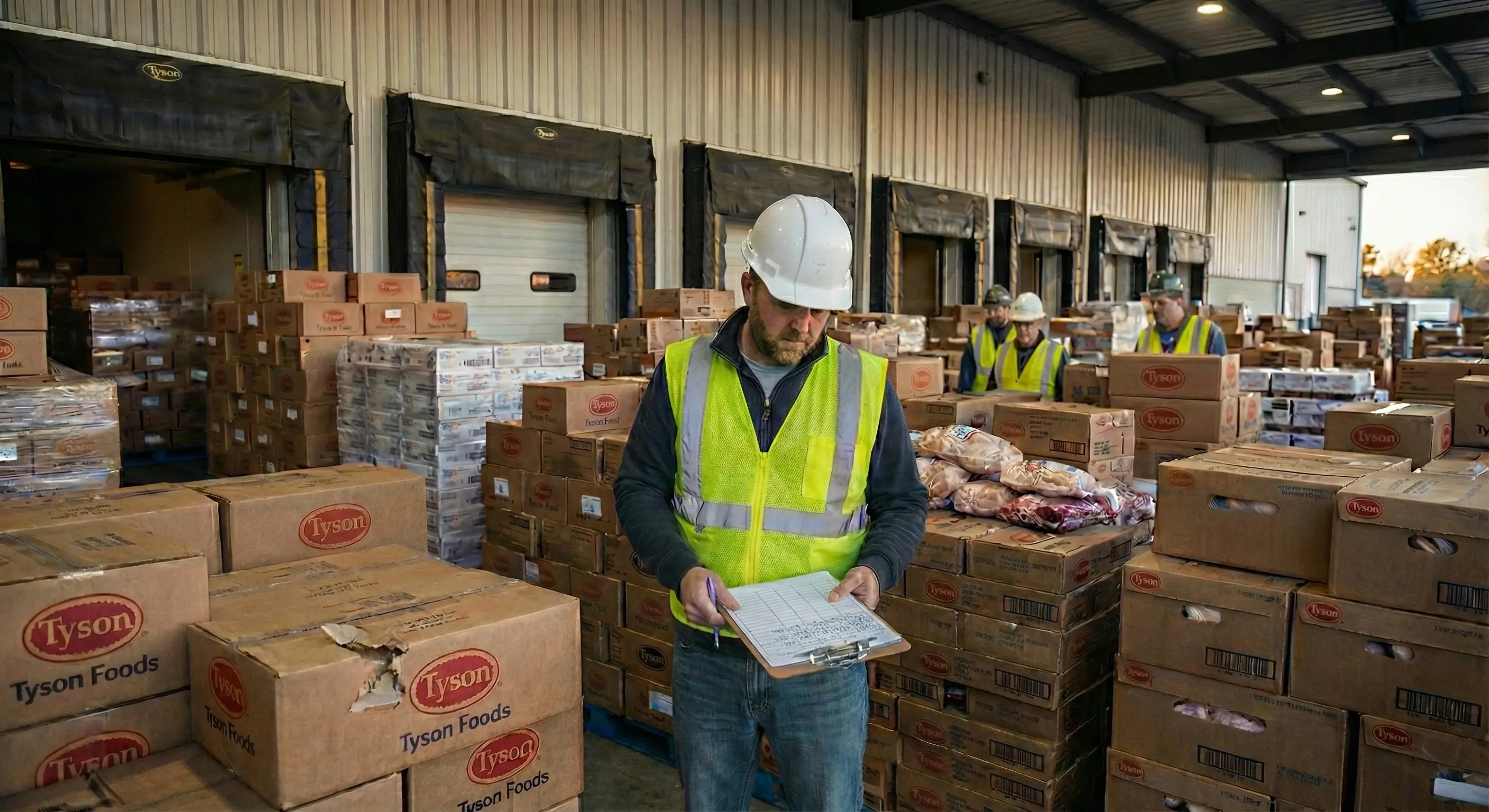Warehouse operations are at the heart of modern supply chains- efficiently moving products from suppliers to customers. As eCommerce continues to grow and consumer expectations rise, warehouses have become high-tech hubs focused on accelerated fulfillment. However, while automating warehouse operations and advanced technology have transformed the customer experience, mastering the basics of warehouse operations is still important. Let’s find out what these processes are and how they can be carefully optimized to ensure seamless service.
What Is Warehouse Operations?
Warehouse operations include all the tasks of receiving, storing, packing, and distributing goods within a warehouse. Together, these procedures efficiently manage the smooth handling and movement of products. Optimizing your warehouse operations leads to efficient inventory management and timely order fulfillment, both of which play a significant role in business growth and keeping customers satisfied.
What Exactly Is Warehouse Operations Management?
Warehouse operations management means overseeing the daily activities that keep a warehouse running smoothly. This includes processes like staffing, inventory control, and ensuring timely order fulfillment. Maintaining the right staff levels based on workload and costs keeps labor expenses under control while maintaining productivity.
Two major cost factors in a warehouse are time and space. Efficient warehouse management focuses on minimizing these costs without sacrificing quality or safety. By optimizing warehouse operations, businesses can save money and improve their overall performance.
Today, warehouse operations focus heavily on enhancing customer experience due to the rising expectations for faster shipping. Warehouse operations managers can optimize warehouse layouts, integrate new technology, and manage fleets to ensure quick and accurate order fulfillment. Warehouse Management Systems (WMS) play a big role in modern warehouse operations. These systems use AI to streamline processes, reduce errors, and optimize space and resource usage. With the right WMS, managers can make data-driven decisions, improve traceability, and enhance the efficiency of warehouse operations. This is how you can identify and overcome your problems in warehouse operations.
Understanding Warehouse Processes and Procedures
When it comes to managing a warehouse, understanding the main inbound and outbound warehouse operations will help you optimize them. Let’s break it down:
Receiving
Receiving is the first step in warehouse operations, where goods arrive and are checked for accuracy and quality. This means verifying that the goods match the purchase orders (POs), checking for damaged or incorrect items, and updating inventory records. Mistakes during receiving can cause downstream issues in inventory accuracy and storage. If you want to prevent bottlenecks at the docks, improve processing speed, and ensure that goods are accurately accounted for, focus on improving your warehouse receiving.
Putaway
Putaway moves received goods from the receiving area to their appropriate storage locations. How do you do this in a way that maximizes space and minimizes the time needed for future retrieval? By using strategies like fixed-location putaway or dynamic-location putaway. Optimizing putaway through technologies like space management systems can prevent misplaced items during warehouse operations.
Inventory Storage
Managing how goods are organized and kept in the warehouse involves using various systems, such as pallet racks, vertical shelving, cold storage, or cages, depending on the type of goods. Proper inventory storage strategies help reduce time spent retrieving goods and maximize warehouse space utilization.
Product Slotting
Product slotting refers to strategically placing items in the warehouse to speed up retrieval processes. High-demand or frequently picked items are stored closer to the picking area to reduce the time workers spend moving between locations. Slotting also takes into account the size, weight, and turnover rate of products. An optimized slotting process leads to improved labor costs, picking accuracy, and warehouse throughput.
Picking
Picking is the process of selecting and retrieving products from storage to fulfill customer orders. There are various methods of picking, such as zone picking (where workers are assigned specific areas), batch picking (picking multiple orders at once), and automated picking using conveyor systems or robots.
Packing
A good packing system selects the right box sizes and packing materials to protect items during transit and minimize costs by avoiding oversized packaging. Automated systems can help streamline packing by determining the optimal packaging materials based on the item’s size and weight.
Kitting
Kitting speeds up order processing by combining several individual items into a single package or assembly based on customer orders. This step is commonly used in industries that assemble products from multiple components or ship product bundles. Kitting streamlines order fulfillment by preparing grouped items ahead of time, reducing processing time at the picking and packing stages.
Shipping
Shipping is the final step in warehouse operations, where goods are prepared for transport to customers. This process includes sorting packages, verifying their contents, and loading them onto the correct trucks or shipping carriers. To optimize shipping operations, you require proper resource allocation, mobile tracking technologies, and order verification.
Reporting
Reporting involves analyzing warehouse operations analytics such as inventory levels, order processing times, labor productivity, and equipment utilization. Detailed reporting allows managers to track warehouse performance and identify areas for improvement. Key performance indicators (KPIs) are monitored to ensure that warehouse operations processes are running smoothly and any bottlenecks are addressed promptly. Reporting also helps you forecast demand and plan future warehouse operations.
Inventory Management
Good inventory management helps set reorder points, streamline restocking processes, and maintain product availability. It’s vital for ensuring warehouse efficiency and preventing costly inventory discrepancies. So, make sure that your stock levels are accurately tracked and maintained. Software systems use real-time data on stock levels and sales forecasts to keep inventory balanced.
Warehouse Operations KPIs
Effective warehouse management relies on tracking key performance metrics to spot areas for improvement. Some important KPIs to help you manage warehouse operations are:
- Order Accuracy & Fulfillment: Ensure orders are picked, packed, and shipped correctly and on time.
- Inventory Accuracy: Maintain accurate stock levels with regular cycle counting.
- Labor Productivity: Track orders processed per hour to optimize workforce efficiency.
- Space Utilization: Optimize storage space and reduce travel distance during warehouse operations.
- Logistics Costs: Monitor transportation expenses for cost savings.
Use warehouse management systems to stay on top of these metrics.
Best Practices for Efficient Warehouse Operations
Here’s a list of tips if you are planning how to optimize warehouse operations:
- Prioritize Safety: Follow OSHA guidelines to ensure a safe working environment.
- Stay Organized: Use standardized bins and cross-docking to streamline operations.
- Communicate Effectively: Foster regular communication between floor staff and the planning team.
- Integrate Systems: Connect warehouse operations with ERP, TMS, and eCommerce platforms for real-time data.
- Utilize a WMS: Automate tasks, optimize layouts, improve order picking, and manage inventory levels. Using AI in warehouse operations can optimize space, movements, box sizes, and customer communication.
How PackageX Improves Warehouse Operations
With PackageX, you can take your warehouse operations to the next level! Our automation of data digitization and workflows means no more human errors, which leads to improved efficiency in inventory management, fulfillment, shipping, tracking, and receiving. You'll also gain enhanced visibility throughout the entire journey of each package, to get better inventory control.
Not only does our solution drive warehouse operation efficiency, but it also enables flexible fulfillment models to adapt to ever-changing customer demands. When you digitize your logistics data, PackageX provides AI-driven insights that empower you to make informed decisions and optimize your next steps.
With our suite of interconnected APIs, SDKs, and apps, you can easily integrate our solutions into your existing systems for a smooth transition and quicker results. Request a demo now to find out how.
FAQs
What are the 5S in warehousing operations?
5S is a Japanese lean method that focuses on five key principles—sort, set, shine, standardize, and sustain—to keep your warehouse neat and organized. By implementing these concepts, you can transform your workspace into a cleaner, more efficient environment that improves warehouse operations.
What are the 4 basic functions of a warehouse?
No matter what you're dealing with, every warehouse has a few basic functions: moving products, storing them, keeping track of them, and shipping them out. These activities lead us to our four essential categories of equipment: storage, material handling, packing and shipping, and barcode equipment.
What is the objective of efficient warehouse operation?
The goal is to keep costs low, increase throughput, and improve the customer experience. We can achieve this by focusing on better warehouse layout design, integrating technology, reengineering processes, and providing employee training.




